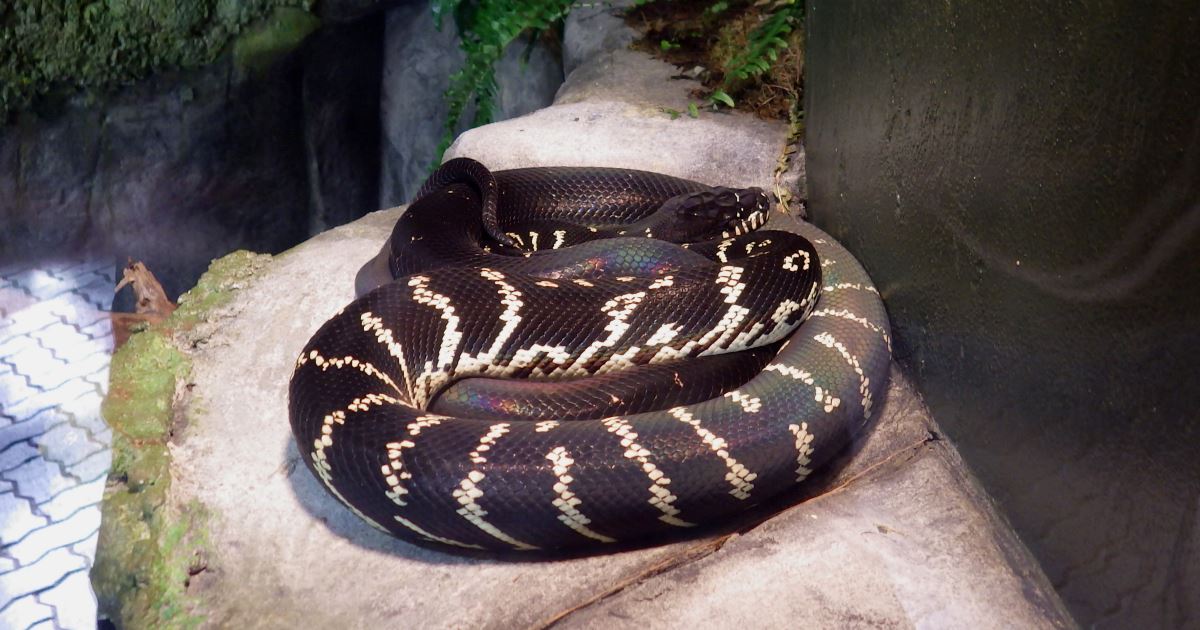The Boelen’s python is a stunningly beautiful python from Papua New Guinea.

Boelen’s python (Morelia boeleni, formerly Simalia boeleni), Toronto Zoo.
In the wild Boelen’s pythons live very high up in the mountains, often over 2000 meters high up. The native habitat of the Boelen’s python is humid and often relatively cold compared to most other python’s native environment — perhaps one of the reasons why their needs in captivity are so poorly understood.
The Boelen’s python’s range is extremely limited and over collection for the pet trade has impacted the already vulnerable wild population. As a result Boelen’s pythons are protected by law in Papua New Guinea and taking specimens from the wild for the pet trade is not permitted. Unfortunately Boelen’s pythons have very little genetic diversity, possibly they have gone through genetic bottlenecks in the not to distant past which makes them more vulnerable to disease and other adverse effects spreading through the entire population (see the article on the cheetah for comparison). The future of the species is not at all certain. Captive breeding of the Boelen’s python is problematic, even zoos struggle with it. Even keeping the animal alive in captivity isn’t always easy.

The Boelen’s python has a magnificent black coloration that shows an iridescent reflection under intense light.
Nevertheless in most jurisdictions it is legal to own a Boelen’s python as a pet. This is not recommended unless you are an expert in keeping snakes. I try not to be judgmental, but it does sound moronic to try to acquire a specimen of such a magnificent snake just to condemn it to almost certain doom. On the other hand some experienced snake keepers do report success maintaining Boelen’s python long term.
Perhaps one day the animal’s needs will become better understood, and once captive breeding of Boelen’s pythons will become more successful, more enthusiast will be able to enjoy owning one.
Further Readings:
Morelia Boeleni – Boelens Python – Pythonidae.nl.
Conservation genetics of Boelen’s python (Morelia boeleni) from New Guinea: reduced genetic diversity and divergence of captive and wild animals – Springer.
Boelen’s Python – Simalia boeleni.
Caring For The Boelen’s Python on reptilesmagazine.com.


